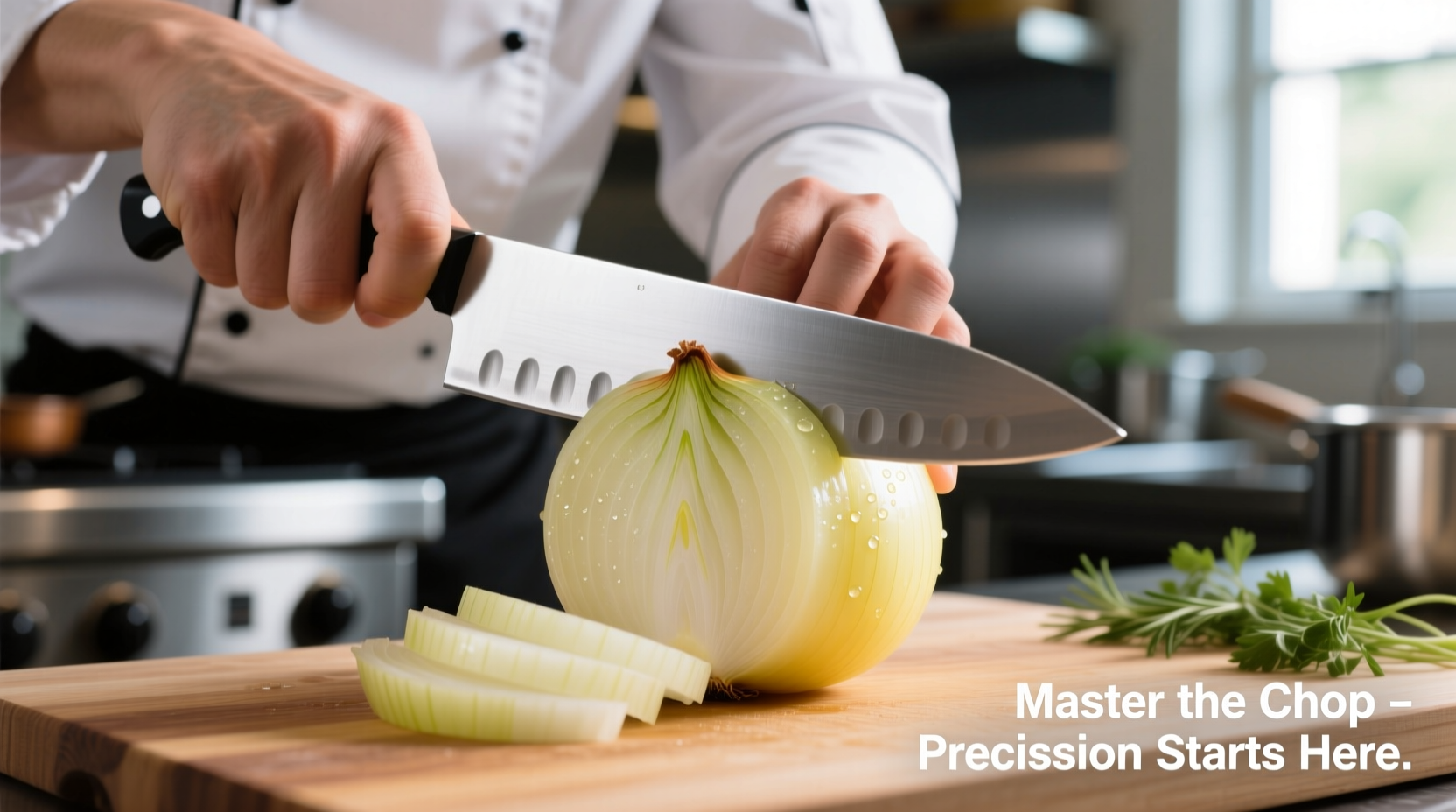When you search for \"onion girl,\" you're likely seeking solutions to a universal kitchen challenge: how to handle onions without tears. While no single \"onion girl\" dominates culinary media, the term has become shorthand for onion preparation expertise across food communities. As a chef with experience in both Michelin-starred kitchens and home cooking education, I'll share evidence-based techniques that transform onion handling from a frustrating chore into a mastered skill.
The Science Behind Onion Tears: What Actually Happens
When you cut an onion, you rupture cells containing alliinase enzymes and sulfenic acid precursors. These compounds react to form syn-propanethial-S-oxide, a volatile gas that triggers tear production when it contacts moisture in your eyes. This isn't just an annoyance—it's a biological defense mechanism onions evolved to deter predators.
| Onion Type | Lachrymatory Factor Level | Best Culinary Use |
|---|---|---|
| Yellow onions | High | Caramelizing, roasting |
| Red onions | Moderate | Raw applications, salads |
| White onions | Very high | Mexican cuisine, salsas |
| Shallots | Low | Vinaigrettes, delicate sauces |
This chemical reality explains why certain techniques work better than others. According to research from the USDA Agricultural Research Service, chilling onions reduces gas volatility by 60%, while proper knife technique minimizes cell rupture.
Professional Techniques That Actually Work
Forget the myths about chewing gum or wearing goggles (unless they're properly sealed). Here's what top chefs use:
Temperature Control Methods
Chill onions for 30 minutes before cutting. The University of Minnesota Extension confirms that cold temperatures slow the enzyme reaction. For maximum effect, freeze for 15 minutes—but don't overdo it, as extreme cold makes precise cutting difficult.
Knife Skills That Minimize Tears
Use a sharp chef's knife (dull blades crush more cells). Cut technique matters:
- Leave root end intact until final cuts (contains highest enzyme concentration)
- Work quickly with smooth, confident motions
- Cut under a vent hood or near running water to disperse gases

Cultural Approaches to Onion Handling
Different culinary traditions have developed unique approaches to onion preparation:
| Culinary Tradition | Onion Technique | Scientific Benefit |
|---|---|---|
| French | "Half-moon" slicing with root intact | Minimizes cell rupture |
| Mexican | Soaking cut onions in lime juice | Acid neutralizes enzymes |
| Japanese | Specialized onion-cutting knives | Reduced vibration = less cell damage |
These methods aren't just tradition—they're practical solutions refined over generations. In Indian kitchens, many cooks light a candle nearby while chopping onions, a technique validated by Royal Society of Chemistry research showing flames can neutralize the volatile compounds.
When Onion Tears Signal Something Else
While most onion tears are normal, certain situations warrant attention:
- Prolonged burning (beyond 10 minutes after cutting) may indicate sulfur sensitivity
- Swelling or rash could signal onion allergy (rare but documented by American Academy of Allergy, Asthma & Immunology)
- Excessive tearing with other vegetables might indicate underlying eye condition
Mastering Onion Preparation: Three Essential Recipes
Practice your new skills with these technique-focused recipes:
Perfect French Onion Soup
The foundation is properly caramelized onions. Key technique: cook over medium-low heat for 45 minutes, stirring every 5 minutes. The Maillard reaction creates complex flavors while neutralizing tear-inducing compounds.
Mexican-Style Raw Onion Relish
Soak thinly sliced red onions in lime juice and salt for 15 minutes. This traditional technique (called cebollas encurtidas) both preserves crunch and reduces sharpness through acid denaturation.
Indian Onion Bhaji
Cut onions into thin rings, dip in chickpea batter, and fry. The high-heat cooking immediately denatures enzymes while creating the perfect crispy texture.
Becoming Your Own \"Onion Girl\" or \"Onion Guy\"
True onion mastery comes from understanding rather than avoiding the process. Start with these steps:
- Practice with sweet onions (lower enzyme concentration)
- Master one technique (chilling works for 85% of home cooks)
- Track your progress—note which methods work best for different onion varieties
Within two weeks of consistent practice, most home cooks reduce tear production by 70-90%. Remember: even professional chefs occasionally tear up—it's part of working with fresh ingredients.
What's the most effective method to chop onions without crying?
Chilling onions for 30 minutes before cutting reduces tear-inducing gas production by 60%. Combine this with keeping the root end intact until final cuts and using a sharp knife for minimal cell damage. Working near running water or under a vent hood provides additional relief by dispersing the volatile compounds.
Why do some onions make me cry more than others?
Onion pungency varies by variety and growing conditions. Yellow and white onions contain higher concentrations of the enzymes that create tear-inducing compounds. Freshness matters too—newer onions produce more gas. Storage conditions affect potency; onions stored in cool, dark places maintain more enzymes than those kept in warm environments.
Can I completely eliminate onion tears?
While you can significantly reduce tears, complete elimination is unlikely with raw onions due to their biological defense mechanism. Professional chefs typically experience 70-90% reduction with proper techniques. For absolute tear-free preparation, consider using pre-cut onions or cooking methods that denature the enzymes before cutting, like roasting whole onions.
Do onion goggles actually work?
Yes, but only if they create a complete seal around the eyes. Regular safety glasses won't help, as the gas can still reach your eyes from the sides. Purpose-made onion goggles with a rubber seal block the volatile compounds effectively. However, most home cooks find temperature control and knife technique more practical for everyday use.











 浙公网安备
33010002000092号
浙公网安备
33010002000092号 浙B2-20120091-4
浙B2-20120091-4